
Tag Archives livestock water

Unpacking a water quality test
Learn how to read the results of a water quality test and what they mean for your herd
Water quality is often overlooked when developing cattle rations. For every kilogram of dry feed consumed, an animal drinks between three to five kg of water. Temperature and feed type can affect water intake. As well, lactating cows have a higher water intake compared to pregnant animals. A lack of water reduces feed intake and […] Read more
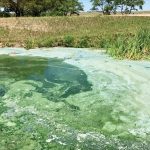
Take caution if blue-green algae is present in cattle water
“Blue-green algae can look like blue-green scum, pea soup or grass clippings suspended in the water. You should start watching for it when the temperatures rise above 25 C.”
Glacier FarmMedia – In over three decades as a veterinarian, Roy Lewis never saw a cow die from ingesting blue-green algae from an infected water source. But he still says it’s an issue ranchers should watch for. Blue-green algae can be instantly deadly to an animal that ingests a sufficient amount. However, it’s tricky to identify as […] Read more

Making the most of your grazing season
Nutrition with John McKinnon
As grazing activity gets underway across the country, beef producers begin to turn their attention to other activities associated with their operation. From a herd nutrition perspective, the thinking of many is “Let the grass take care of the cattle.” Such thinking, while natural, can lead to issues that affect the health and productivity of […] Read more
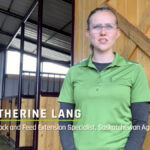
VIDEO: Testing the quality of livestock water
Do you have confidence in the water supply your livestock is drinking? Drought conditions this season not only put a lot of stress on pastures and hay crops, but also the quality of water in dugouts. At this past summer’s Ag in Motion, Catherine Lang with Saskatchewan Agriculture talked about what hazards producers should be […] Read more

Watch water quality and mineral consumption during drought
As drought grips Western Canada and parts of Ontario, producers need to watch water quality and mineral consumption. Dr. Cheryl Waldner, professor and research chair at the Western College of Veterinary Medicine, says that total dissolved solids and sulphates are two issues that farmers and ranchers should be testing for right now. Waldner was one […] Read more

Eliminating the shock factor when livestock watering
Water and electricity can be a deadly combination for livestock at any time of year. Here’s how to prevent and safely troubleshoot problems
This article originally appeared at The Chronicle of the Horse in January 2021. It is reprinted here with the permission of the author. As a livestock appraiser, I am asked to perform a wide variety of appraisals for insurance purposes. When dealing with death-claim reimbursements, the most common reason I am called is due to […] Read more

University of Saskatchewan scientists investigating effects of sulphates on cattle health
Research: News Roundup from the March 2019 issue of Canadian Cattlemen
University of Saskatchewan researchers are studying the effects of high sulphate levels in the drinking water of cattle. When cattle drink water with high sulphate levels, the sulphates bind trace minerals in the animals’ rumens, preventing them from absorbing necessary minerals. Potential effects include diarrhea, reduced fertility and milk production, slow growth, a depressed immune […] Read more
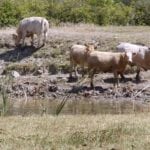
VIDEO: Test livestock water to avoid trace mineral deficiencies
Leah Clark, livestock and feed extension specialist with Saskatchewan Agriculture, talks about the one mineral livestock producers need to watch closely to avoid trace mineral deficiencies, the importance of water testing and why you shouldn’t gauge water quality by eye. (Recorded at this year’s Ag in Motion near Saskatoon) Video editing by Greg Berg.
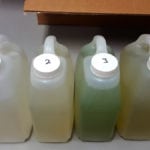
Use caution when testing livestock water quality with hand-held meters
Study compared test results of hand-held meters to laboratory results
Livestock and feed specialists with the Saskatchewan Ministry of Agriculture have learned that not all methods of testing water quality are equal, especially when it comes to total dissolved solids and sulphates. Leah Clark, livestock and feed extension specialist with the Saskatchewan Ministry of Agriculture, took part in a study comparing the accuracy of water […] Read more
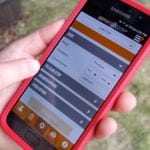
VIDEO: Keeping an eye on your livestock water supply
Ag in Motion 2018: Now, there's an app for that
For her presentation, “Keeping No. 2 out of your No. 1 water source,” at Ag in Motion last month, Alicia Sopatyk with Saskatchewan Agriculture spoke about options for livestock producers such as permanent or electric fencing to maintain a sustainable and clean water supply. But for a look in real time as to how that […] Read more



